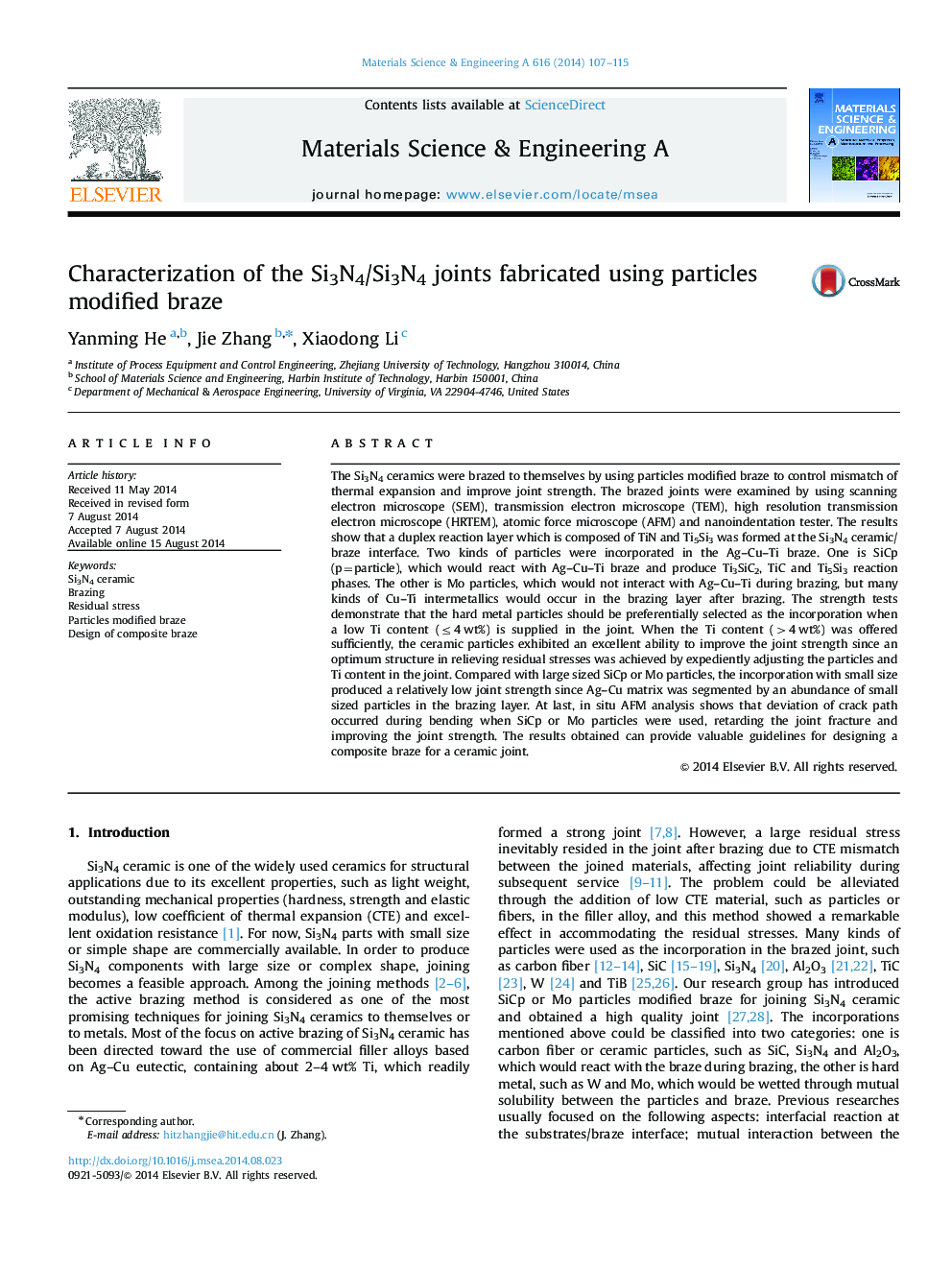| کد مقاله | کد نشریه | سال انتشار | مقاله انگلیسی | نسخه تمام متن |
|---|---|---|---|---|
| 1574804 | 1514727 | 2014 | 9 صفحه PDF | دانلود رایگان |
عنوان انگلیسی مقاله ISI
Characterization of the Si3N4/Si3N4 joints fabricated using particles modified braze
دانلود مقاله + سفارش ترجمه
دانلود مقاله ISI انگلیسی
رایگان برای ایرانیان
کلمات کلیدی
موضوعات مرتبط
مهندسی و علوم پایه
مهندسی مواد
دانش مواد (عمومی)
پیش نمایش صفحه اول مقاله

چکیده انگلیسی
The Si3N4 ceramics were brazed to themselves by using particles modified braze to control mismatch of thermal expansion and improve joint strength. The brazed joints were examined by using scanning electron microscope (SEM), transmission electron microscope (TEM), high resolution transmission electron microscope (HRTEM), atomic force microscope (AFM) and nanoindentation tester. The results show that a duplex reaction layer which is composed of TiN and Ti5Si3 was formed at the Si3N4 ceramic/braze interface. Two kinds of particles were incorporated in the Ag-Cu-Ti braze. One is SiCp (p=particle), which would react with Ag-Cu-Ti braze and produce Ti3SiC2, TiC and Ti5Si3 reaction phases. The other is Mo particles, which would not interact with Ag-Cu-Ti during brazing, but many kinds of Cu-Ti intermetallics would occur in the brazing layer after brazing. The strength tests demonstrate that the hard metal particles should be preferentially selected as the incorporation when a low Ti content (â¤4 wt%) is supplied in the joint. When the Ti content (>4 wt%) was offered sufficiently, the ceramic particles exhibited an excellent ability to improve the joint strength since an optimum structure in relieving residual stresses was achieved by expediently adjusting the particles and Ti content in the joint. Compared with large sized SiCp or Mo particles, the incorporation with small size produced a relatively low joint strength since Ag-Cu matrix was segmented by an abundance of small sized particles in the brazing layer. At last, in situ AFM analysis shows that deviation of crack path occurred during bending when SiCp or Mo particles were used, retarding the joint fracture and improving the joint strength. The results obtained can provide valuable guidelines for designing a composite braze for a ceramic joint.
ناشر
Database: Elsevier - ScienceDirect (ساینس دایرکت)
Journal: Materials Science and Engineering: A - Volume 616, 20 October 2014, Pages 107-115
Journal: Materials Science and Engineering: A - Volume 616, 20 October 2014, Pages 107-115
نویسندگان
Yanming He, Jie Zhang, Xiaodong Li,